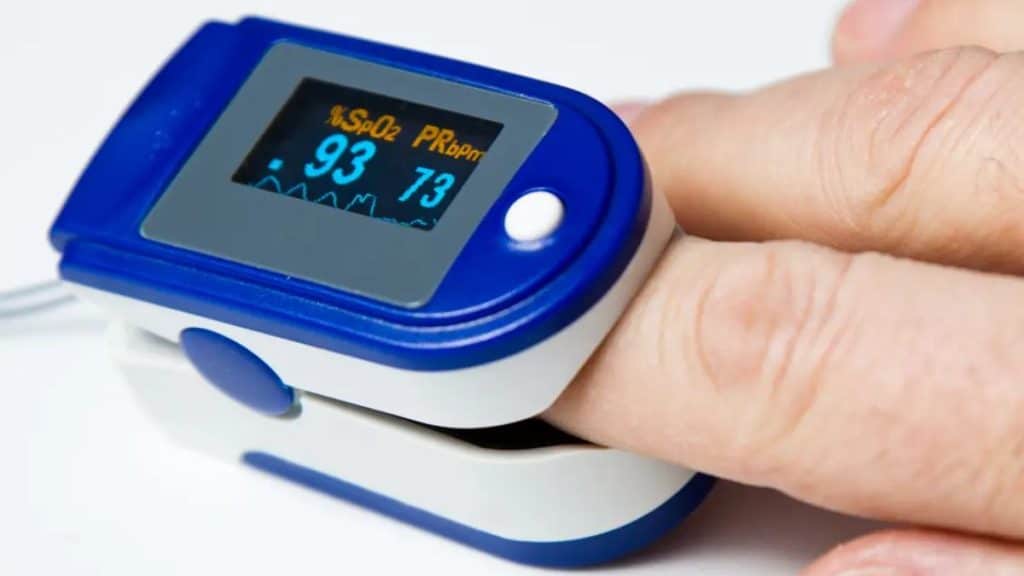Doctors and other health professionals use various equipment to check and monitor their patients to obtain vital readings. These devices include a pulse oximeter, part of a health professional’s medical arsenal.
Have you heard of a pulse oximeter before? It is not as common as a heart rate or blood pressure monitor. However, it is essential to check certain fluid levels in the body.
What does a pulse oximeter measure?
Oxygen
A pulse oximeter is a small device that measures blood oxygen levels. Inside your body is a vast network of arteries and veins carrying blood back and forth to deliver oxygen and nutrients to every tissue. As we breathe, oxygen enters our lungs and travels to the alveoli to exchange gas
Fresh oxygen enters the blood hemoglobin and then starts its journey around the body. Your blood is the pathway, and hemoglobin is the vehicle carrying oxygen.
Saturation
When we talk about how saturated oxygenated hemoglobin is, we mean the percentage that shows how much oxygen is ready for the body to use. Doctors monitor these saturation levels because they can tell a lot about a patient’s well-being.
Many conditions can change how much oxygen is in your blood. This includes anemia, asthma, pneumonia, chronic obstructive pulmonary disease, lung cancer, heart defects you’re born with, COVID-19, and heart attacks. Knowing how to measure this is vital for health workers planning patient care.
Keeping track of saturation helps medical professionals in several ways. It lets them see if someone needs help breathing or understand why they might be out of breath. They also use it to determine whether a person can handle working out or heavy physical work.
Medical Information
Doctors depend on this information to spot times when someone stops breathing briefly, like with sleep apnea or during sleep studies. These tests show if someone does better with extra oxygen and reacts well to it. Plus, it’s super important to ensure ventilators work as they should.
When a patient is under sedation, monitoring oxygen levels is another critical job for saturation tracking in the operating room. It also helps doctors know whether treatments for lung issues are effective.
How Does It Work?
Now that you understand what a pulse oximeter measures, let’s go over how it works.
This medical device is non-evasive as it clips on a finger or other body parts like your ear or toe and measures oxygen levels in the blood. It is precise because it can detect fluctuations and small real-time changes. It is an ideal critical care device to see how efficiently blood carries oxygen to extremities, like a leg or arm
While typically found in hospitals or doctor’s offices, you can also see them in ambulances, clinics and recovery suites. You can purchase them for home use. Your doctor may even recommend one to measure levels at different times of the day.
You don’t need special training because it simply clips on the end of your finger. Then you press the on button. It uses a beam to pass through your blood to measure your blood pressure, which is called SpO2, and for most healthy people, this number will be between 94% and 100%. The test only takes a few minutes, and you can resume normal activities
Home Use Devices
There are two different kinds of pulse oximeter users at home. Pulse oximeters on prescription are the same in hospitals and doctors’ offices. You will get a prescription from your medical professional to pick it up. They are more expensive than over-the-counter ones but are recommended by doctors for home use. Your health insurance provider may cover the cost.
It is possible to find an over-the-counter pulse oximeter in various stores or online. These devices are more compact and less expensive. They measure blood oxygen levels, while some even link to your smartphone through an app.
How to Get Accurate Readings
To get the best readings at home, remember these tips. Make sure your hand is calm during the measurement. Your hand should be lower than your heart. Follow what your device’s manual says. If the readings jump around at first, wait till they settle down before you take them down.
Take off any nail polish from your finger with the device beforehand. It’s also a smart idea to record the date and time you took each test. This will come in handy when talking with your healthcare provider later.
A few different things could influence your reading. Tobacco or vaping are these things. How thick and warm your skin is matters, as do dirty nails and not-so-great blood flow. Skin colour changes might also make the reading less accurate.
